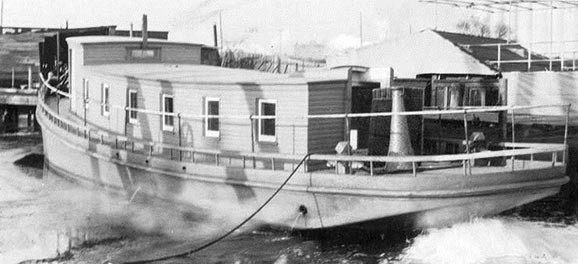Somerset II (Id.No. 2162)
1918

The first and second ships named Somerset retained the name carried at the time of their acquisition by the Navy during the Civil War and World War I, respectively, while the third Somerset (LPD 25) was named to honor the seven members of the flight crew and the 33 passengers embarked in United Air Lines Flight 93 on 11 September 2001 when it was hijacked by al Qaeda-linked suicide terrorists. Those on board the doomed plane bravely attempted to wrest control of the aircraft from the four hijackers, and Flight 93 crashed in Stonycreek Township, Somerset County, Pa., well short of what most believed was a prominent target in Washington, D.C. "The courage and heroism of the people [on]board the flight will never be forgotten,” Secretary of the Navy Gordon R. England declared, “and USS Somerset will leave a legacy that will never be forgotten by those wishing to do harm to this country."
Somerset (AK 212) and Somerset (PCE 892) were named for the counties in Maryland, Maine, New Jersey, and Pennsylvania, but the former was never commissioned, and the latter received her name while decommissioned and in reserve, and thus never carried that name.
II
(Id. No. 2162: length 55'; beam 13'6"; draft 1'6" (forward), 3'8" (aft); complement 5)
The second Somerset, a wooden hull, single-screw motorboat completed in 1917 at Oriole, Md., by J.S. Muir, boat builder, was inspected by the Navy in the Fifth Naval District two days after Christmas [27 December] 1917 and acquired from the Conservation Commission of Maryland, whose headquarters lay in the Munsey Building in Baltimore, Md., which also served as the wartime Section Headquarters. Delivered to the government under free lease, Somerset conducted her trial trip on 6 March 1918, and was commissioned on 7 March 1918, CMM K. W. Webster in command.
Having been recommended for employment as a “scout patrol [vessel] Type A slow,” Somerset anchored in Oyster Creek on 10 March 1918. She stood down Chesapeake Bay the following morning, setting course for Tangier Sound, and then anchored off Deal Island.
Over the next six months [from her existing deck logs], Somerset patrolled her “beat,” a triangular area between Deal Island, Smith Island, and the town of Crisfield, Md., almost daily (only on 10 May and 26 June did high winds compel a suspension of patrols), proceeding to the Virginia line and back, and logging visits to the Manokin and Annemessex Rivers. During that time, she exchanged information on her patrol area with the schooner Jackson (Id. No. 1459) (formerly Nellie Jackson, her name shortened on 28 July 1917 to surname only in General Order No. 314), her pre-war running mate in the Conservation Commission, and the freight boat Pocomoke (SP 571). When the occasion demanded, Somerset would put in to Deal Island or Crisfield to pick up mail or fuel.
While on duty on 31 March 1918, Somerset experienced trouble with her electric starter and put in to Deal Island so that CMM Webster could go ashore and telephone Lt. Cmdr. William H. Killian, USNRF, the commander of Section 8 (Patrol Boats), in the Fifth Naval District. Killian told Webster to keep Somerset where she was, and “he would send a man down to fix it.” After the promised assistance arrived on the morning boat the next day, Somerset resumed her “usual morning rounds…”
Inside a fortnight, in the course of her patrol on 14 April 1918, she came to the rescue of a skipjack that had lost her sails, and towed it in to port for repairs. On 14 August, the boat suffered her only casualty, when MM2c George M. Knachel, suffered a cut on the cheek in an engine room accident. Somerset put in to Crisfield to obtain medical help for the hurt sailor, and following stitches in the local hospital, Knachel returned to duty.
Ultimately, Somerset was stricken from Navy lists on 26 November 1918, 15 days after the Armistice, and was returned to the Conservation Commission of Maryland.
Last Edited: 11/14/13
Robert J. Cressman


